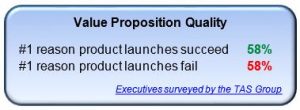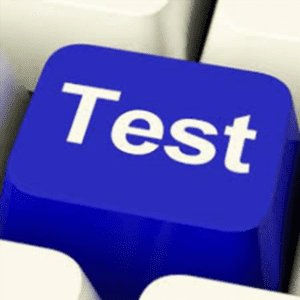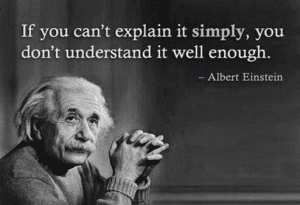Value selling delivers results. CRM data from B2B organizations that have adopted value selling demonstrate that opportunities where a Value Proposition is used result in: (1) 5-15% higher win rates and (2) 5-25% higher price outcomes.
But the content and usability of a Value Proposition matter. In a survey by the TAS group,  executives identified Value Proposition quality as the number one reason for both product launch successes and product launch failures. Real results and real returns should drive product management to focus on the quality of the Value Proposition content that is made available to sales.
executives identified Value Proposition quality as the number one reason for both product launch successes and product launch failures. Real results and real returns should drive product management to focus on the quality of the Value Proposition content that is made available to sales.
All too often, B2B product management and marketing teams fail to provide sales and presales professionals with any Value Proposition at all. When they provide one, it is frequently qualitative not quantitative. Sales’ reluctance to use qualitative-only Value Propositions in customer conversations is understandable. They know they are bound to get quantitative questions: “By how much?” and/or “What is that worth?” Some customer stakeholder will ask for customer-specific examples and numbers.
Value Propositions are most effective when they are both qualitative and quantitative. But a quantitative Value Proposition requires that someone do the math and that someone present the math. Doing the math usually this means a spreadsheet. Presenting the math then becomes the problem.
Typically, a value spreadsheet is useful only to its creator. If the value spreadsheet’s author has the time, the travel budget and the interpersonal skills to present effectively to customers then the spreadsheet gets some mileage and has some effect on sales results.
But often enough, analytical spreadsheet authors are inept at presenting simply and clearly. Often enough their strong suit is not interactive engagement with customer stakeholders. Often enough, experienced account managers hesitate to take the risk of putting a spreadsheet nerd in front of customers. Invariably, a Value Proposition will have the greatest impact on sales results if spreadsheet authors get leverage from other members of the customer-facing team.
Designing Value Propositions that are useful for B2B sales teams makes leverage possible and improves sales effectiveness. But Value Propositions are only as good as their content, their layout and their usability. Value Propositions should be designed to support effective customer conversations with customer economic insights.
Test Our Value Proposition. How do product managers and marketing professionals design Value Propositions to get the greatest sales impact? By testing Value Propositions in simulated and real customer situations.
For a Value Proposition to be effective, it needs to be tested: (1) by targeted users and (2) in likely  sales situations at points of the sales cycle where it will be useful. Regardless of when and by whom the Value Proposition will be deployed in customer conversations, sales and presales users will usually be pursuing some combination of the following three objectives:
sales situations at points of the sales cycle where it will be useful. Regardless of when and by whom the Value Proposition will be deployed in customer conversations, sales and presales users will usually be pursuing some combination of the following three objectives:
- Qualify and Validate. Value Propositions are useful in customer conversations to understand whether our product addresses issues that matter for a B2B customer and its stakeholders. Value Propositions need to be designed so that a sales or presales user can test whether the benefits our solution brings to a customer resonate in a stakeholder conversation.
- Engage and Credentialize. Good sales and presales professionals invariably seek to draw the customer into a conversation. Convincing the customer early that we understand their business builds trust. A good Value Proposition draws the customer into a collaborative, memorable conversation about how our solution will create value for They are more likely to engage if they see that we understand their problems and if we help them realize the way our solution addresses their problems.
- Differentiate and Prove. Most customer buying processes require that a group of customer stakeholders are convinced that change will create business value. For customer stakeholders to support buying our solution, they need to believe that our differentiation is worth the price. Staying in the game often requires early differentiation. Winning the game usually requires proof, not with mathematical rigor, but at a level of rational and logical persuasion. Value Propositions need to support differentiation and proof.
4 Steps to Test a Value Proposition. Testing a Value Proposition should be a no-brainer. Yet frequently the content of a Value Proposition is pulled together at the last minute to get ready for the Big Meeting. That usually means that a Value Proposition is first tested in live action, and  ordinarily means that no one bothers to test or refine it afterwards so that it will be more useful or more effective the next time.
ordinarily means that no one bothers to test or refine it afterwards so that it will be more useful or more effective the next time.
There are four distinct testing steps that gradually serve to raise the bar for the quality, simplicity and scalability of a Value Proposition. Taking them in order helps to arrive at a better outcome without burning bandwidth and credibility with sales reps too early. The attention of a skilled and talented sales rep is a scarce resource. A Value Proposition is more likely to get early use and early success stories when it is ready for prime time.
 variables, messages and even graphs for internal analysis and decision-making. It is entirely different to present a Value Proposition effectively to a customer. A spreadsheet author should routinely be expected to present a Value Proposition internally as if the audience is a customer.
variables, messages and even graphs for internal analysis and decision-making. It is entirely different to present a Value Proposition effectively to a customer. A spreadsheet author should routinely be expected to present a Value Proposition internally as if the audience is a customer.
In product development and product launch, a value spreadsheet may be in reasonable shape prior to commercialization. But that does not mean the  Value Proposition is ready for prime time in sales. Good management discipline makes value communication and value presentations part of internal product development, pricing and launch processes. This forces spreadsheet authors to think about messages, graphics and flow that will be useful in presenting the Value Proposition to customers. The result is a tested and refined framework for a good value story that will resonate clearly for the customer.
Value Proposition is ready for prime time in sales. Good management discipline makes value communication and value presentations part of internal product development, pricing and launch processes. This forces spreadsheet authors to think about messages, graphics and flow that will be useful in presenting the Value Proposition to customers. The result is a tested and refined framework for a good value story that will resonate clearly for the customer.
Step #2. The Value Proposition author should have a value conversation. Getting a good presentation in shape is a step in the right direction. But well-designed Value Propositions  tempt the customer to engage. They should be laid out in a way that draws the customer into a conversation about their problems. Assumptions should be displayed in a way that gets customer buy-in by agreeing that we have gotten their business assumptions right or volunteering information about better estimates of their operating conditions. Visuals should invite customer questions instead of being a prop for a one-way sales monologue.
tempt the customer to engage. They should be laid out in a way that draws the customer into a conversation about their problems. Assumptions should be displayed in a way that gets customer buy-in by agreeing that we have gotten their business assumptions right or volunteering information about better estimates of their operating conditions. Visuals should invite customer questions instead of being a prop for a one-way sales monologue.
This helps sales and the customer collaborate early as they agree to changes in the Value Proposition. It provides the opportunity for sales and presales professionals to build customer trust. Setting up conversational tests of a Value Proposition by its author is a good second step. Whether the audience is internal or a friendly customer, this helps to prompt further improvements in layout, information availability and graphs that guide the conversation better for other users and that answer customer questions.
Step #3. A non-author presales professional (or other subject matter expert) should have a value conversation. It is a big step for someone other than the author to use a Value Proposition, but it is a necessary step to get sales leverage. The first use by someone else is a test of how clearly the content is laid out and how intuitively it provides the information that is needed in a customer conversion. The biggest challenge of this first non-author conversation is invariably that the author made the content too complicated for others to understand it and too unintuitive for others to use it.
This bias toward complexity is a good reason to start with presales professionals for a first non- author test. As members of a sales team, presales professionals, by definition, engage directly with customers prior to the closing of a sale. “Presales” roles are associated with many job titles. Primary presales responsibilities vary but usually include at least two of the following:
author test. As members of a sales team, presales professionals, by definition, engage directly with customers prior to the closing of a sale. “Presales” roles are associated with many job titles. Primary presales responsibilities vary but usually include at least two of the following:
- provide customers with in-depth technical and product information
- provide product or solution use and implementation experience in practice that is relevant to the specifics of the customer
- tailor a package or solution to customer specifics.
By virtue of their specialist role and their technical, application and customer knowledge, presales  professionals are usually well-suited to use and test someone else’s Value Proposition. They are likely to ask difficult questions in call preparation. They are likely to plan and rehearse their own presentation of someone else’s content. An experienced presales professional is good at simplifying and clarifying content.
professionals are usually well-suited to use and test someone else’s Value Proposition. They are likely to ask difficult questions in call preparation. They are likely to plan and rehearse their own presentation of someone else’s content. An experienced presales professional is good at simplifying and clarifying content.
For a receptive Value Proposition author looking for ideas and feedback, preparation and use by a good presales professional is almost certain to generate a firehose of ways to improve the content, layout and usability of the Value Proposition. Whether their first use is an internal rehearsal or a friendly customer call, presales professional tests are a vital step to broaden the use and usability of the Value Proposition.
Step #4. A sales rep should have a value conversation. The idea of training sales reps on the content of an untested Value Proposition is insanity. It is essential to test the Value Proposition  by watching a quota-carrying, commission-earning sales rep point, click, talk and answer questions in a simulated or real customer conversation. This is the only way that a Value Proposition author will be able to tell whether the layout and content are simple enough and intuitive enough to be broadly adopted and useful.
by watching a quota-carrying, commission-earning sales rep point, click, talk and answer questions in a simulated or real customer conversation. This is the only way that a Value Proposition author will be able to tell whether the layout and content are simple enough and intuitive enough to be broadly adopted and useful.
Designing a Value Proposition is like designing software. Beta tests are important. An internal simulated conversation as part of call prep helps. But the objective is confident use of the Value Proposition by sales in a conversation with the customer. We need to make sure that the layout matches natural ways to have the conversation. We need to challenge whether the visuals help tell the story. We should cast a critical eye on whether we have provided the best summary numbers and graphs to make the Value Proposition usable. We should lay out quantification of our differentiation and our value drivers in a way that supports productive sales conversations about how we improve customer business performance.
The third and fourth testing steps can be folded together effectively when one member of the team acts as a sales mobilizer or champion. A Value Proposition author or a presales professional can play the mobilizer role without turning it into a full-time job. The mobilizer or champion can drive the first live conversation with a customer with a targeted early sales user riding shotgun. That provides the opportunity for feedback and refinement. If needed, the mobilizer or champion can drive in a second or third live customer conversation with v2 or v3 of the Value Proposition.
But rolling out a Value Proposition is like drivers ed. After sitting in the passenger seat as an observer, a sales rep needs to drive his or her first customer conversation. Like a good drivers ed instructor, the mobilizer should plan to be there as a backstop but resist the temptation to grab the wheel or hit the brake.
Early customer conversations with a mobilizer playing progressively less dominant roles, are likely to refine and simplify the Value Proposition while generating early success stories that support and motivate a broader rollout.
When Should We Test Our Value Proposition? Early, often and continuously. The best marketing approach to Value Propositions is an agile approach. Value Propositions are never finished works of art on display to stand the test of time. They can and should become a living, evolving repository of best practices for selling our solution and content that works in real customer conversations.
 Value Propositions are more than just math. They are a communication tool, including visuals and layout, for use by sales teams in call preparation, customer conversations and presentations. They need to be designed with users in mind where increasingly customer-facing teams include both sales representatives and presales professionals.
Value Propositions are more than just math. They are a communication tool, including visuals and layout, for use by sales teams in call preparation, customer conversations and presentations. They need to be designed with users in mind where increasingly customer-facing teams include both sales representatives and presales professionals.
The best B2B teams use Value Propositions collaboratively to improve B2B sales team performance, addressing sales challenges throughout the B2B sales cycle. For account executives and sales reps, they are useful early in the sales cycle in call preparation, in  building sales confidence, in qualifying opportunities and in engaging customer executives. For technical sales and presales professionals, joining a customer-facing team in the middle of the sales process, Value Propositions are an important way to address presales challenges and to maximize the impact of presales. Sales and presales teams, working together, use Value Propositions to highlight differentiation and cut through complexity as they collaborate with customer stakeholders to build a shared business case to buy. That shared business case can be used to accelerate the closing process. The objective and the result is to help sales teams win.
building sales confidence, in qualifying opportunities and in engaging customer executives. For technical sales and presales professionals, joining a customer-facing team in the middle of the sales process, Value Propositions are an important way to address presales challenges and to maximize the impact of presales. Sales and presales teams, working together, use Value Propositions to highlight differentiation and cut through complexity as they collaborate with customer stakeholders to build a shared business case to buy. That shared business case can be used to accelerate the closing process. The objective and the result is to help sales teams win.

